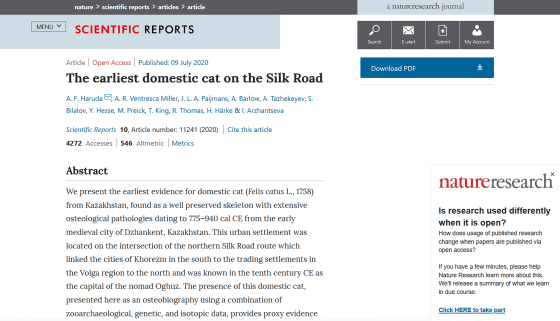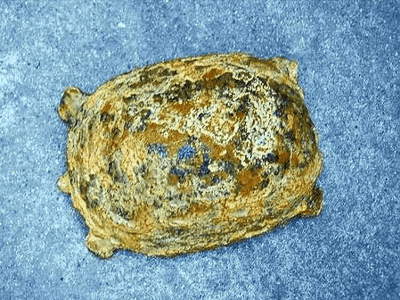It turned out that the medieval nomads who were supposed to not keep cats were 'carefully taking care of broken cats'

Although cats have been loved by humans since ancient times, it was thought that the culture of keeping cats had not prevailed until the 18th century in the dry grasslands of central Asia in modern
The earliest domestic cat on the Silk Road | Scientific Reports
https://www.nature.com/articles/s41598-020-67798-6

The earliest cat on the Northern Silk Road | EurekAlert! Science News
Care for cats? So did people along the Silk Road more than 1,000 years ago-ScienceDaily
https://www.sciencedaily.com/releases/2020/07/200709085318.htm
Since 2011, the international research teams of the Russian Institute of Higher Studies (HSE) , Martin Luther University , and Corkit Atakiji Rorda State University have been conducting excavations at the site of Jankent since 2011.
Jankent is an archaeological site along the Sirdarya River, which connects to the Aral Sea , and is believed to have been constructed around the 7th century by the Oguz tribe of nomads in northern Central Asia. In 2019, Dr. Ashleigh Haruda of Martin Luther University, a member of the excavation team, discovered a very well-preserved cat skeleton.
Generally, the bones of animals found by excavations of ruins are scattered, and it is very rare to find individual bones collectively. In this case, however, the entire skull, including the lower jaw of the cat, part of the upper half of the body, the bones of the legs, and the four vertebrae were uncommonly found. So Haruda decided to form an international research team to study cat bones to find out what life a prenatal cat was living.

According to the research team, the cat discovered this time is a male cat that lived around the latter half of the 8th century and was obviously buried by humans after death. In addition, X-rays, 3D imaging, and detailed analysis of the bone also revealed that this cat had 'fractured several times', but even after the fracture, the cat remained alive and eventually the fracture was healed. Dr. Haruda points out. Cats, at least in the process of having a fracture, are believed to have been taken care of by humans.
Atomic isotope analysis of bone samples revealed that the cat found this time had a diet rich in protein, compared to cats and dogs of the same age found during the excavation of Jankent. I also understood. The cat has lived for more than a few years, Dr. Haruda argued, 'in the latter years, he must have lost almost all his teeth and be fed by humans.'
In addition, DNA from the bones of the found cats suggested that the cats are likely to be domestic cats that are now widespread rather than wild cats in the grasslands of Central Asia. It was thought that the Oghuz at that time kept only useful animals such as livestock and dogs that monitored them, but domestic cats have no clear use for nomads. The fact that people at the time kept exotic-looking domestic cats for no apparent purpose indicated that cultural changes had taken place in Central Asia earlier than originally expected.
Since Jankent is a site along the

Related Posts:







